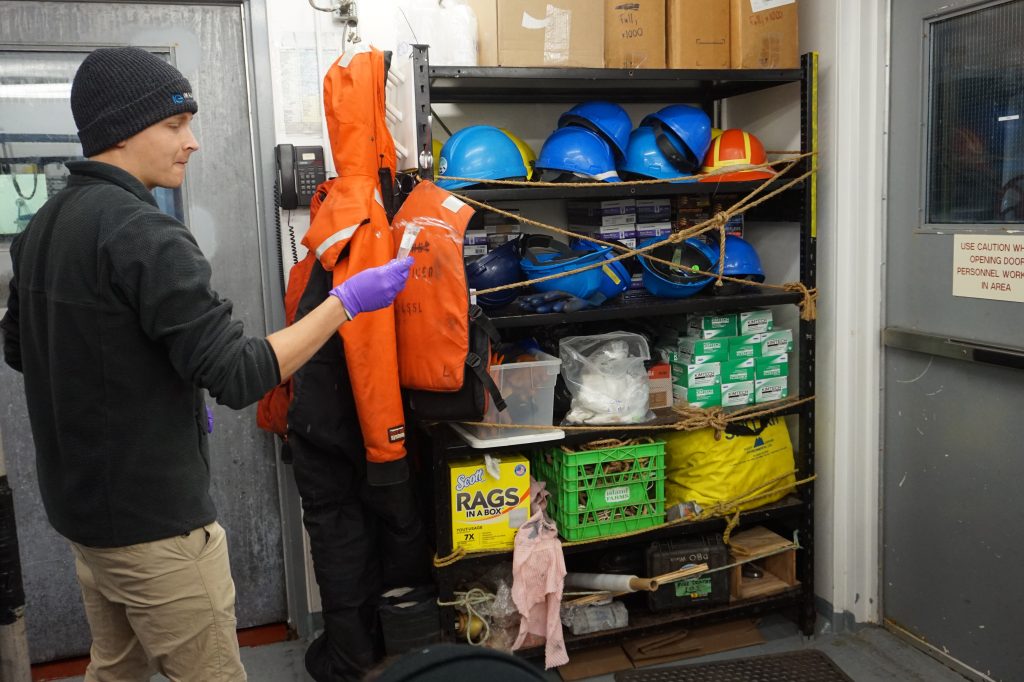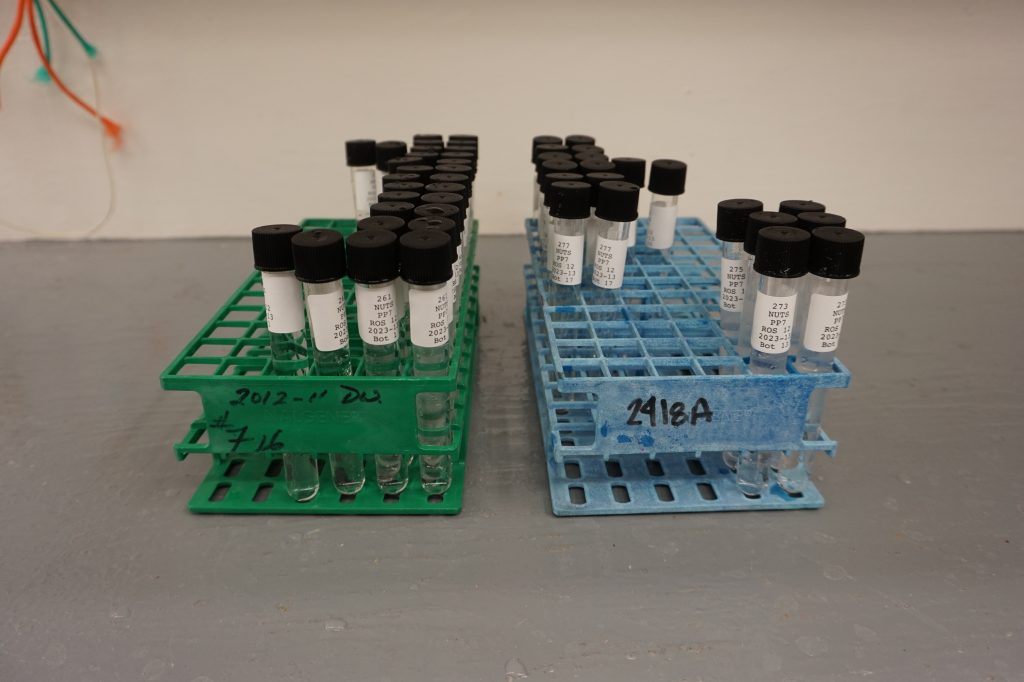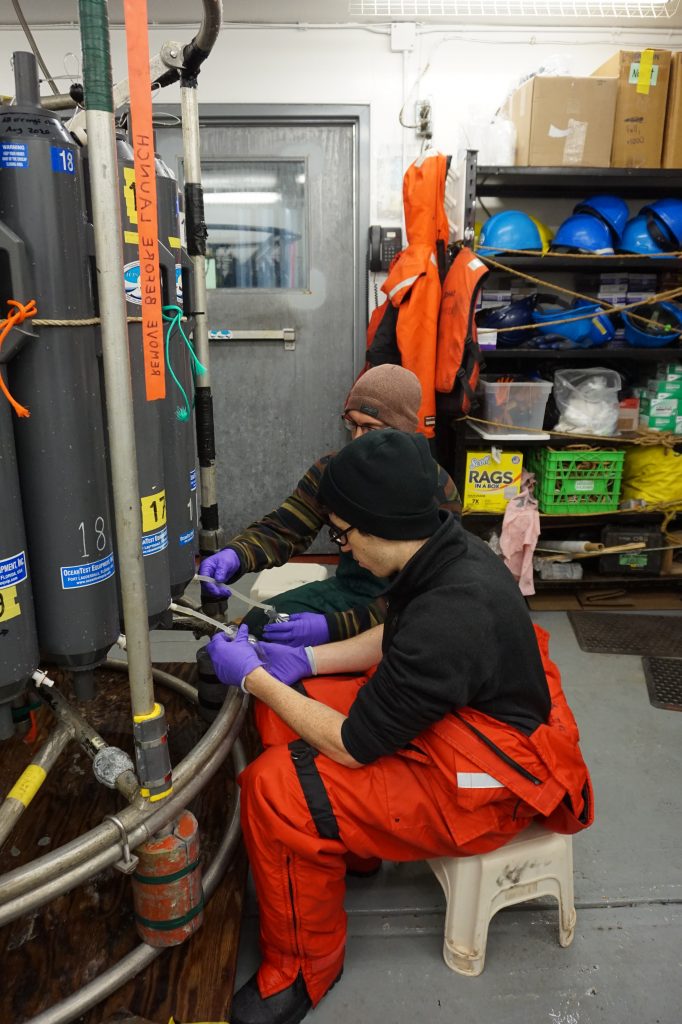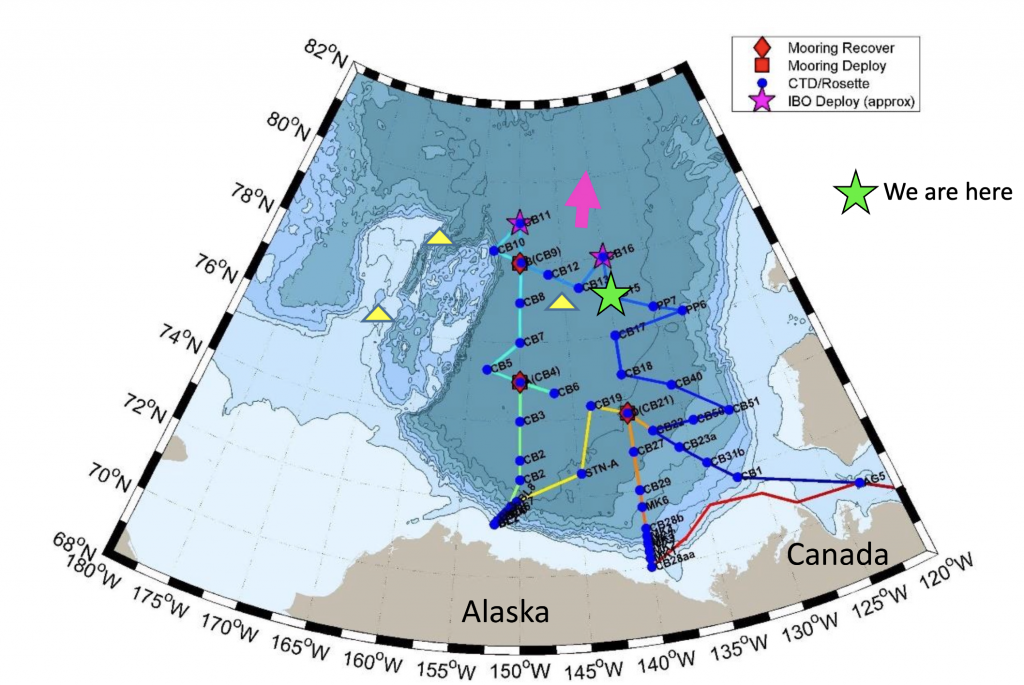Dispatch 8: Sampling Party!
Ashley Arroyo
September 22, 2023
Dispatch 8: Sampling Party!
What do we do with the CTD rosette once it comes back on deck after a cast? We have a sampling party! All the watch-standers along with anyone else who is free and wants to help gather in the rosette shack. We put on music (this is an important step), put on our gloves and prepare to take water samples. The Niskin bottles that are housed in the rosette (check out dispatch #6) are filled with water from various depths and are ready to be sampled and analyzed. There are lots of properties that we sample for, and each has their own type of container and are labeled.
Since some water properties are more time sensitive than others, there is a particular order of drawing water from the rosette to ensure that none of the samples are contaminated or compromised. For example, gases (including oxygen and carbon) are drawn first. This is because if the water is exposed to the surrounding air, the gas concentrations in the samples may be altered and not representative of the actual concentrations in the ocean, so these samples take priority! For the gases, certain chemicals are added to their sample flasks right before they are closed (we call this “pickling the samples”) which preserve the concentrations before they are analyzed on board. Since there are several steps, one person will usually draw water from the Niskin bottle, and hand it off to another person for pickling (I am the designated oxygen pickler on the day shift!). After gases, water samples are taken to measure several biological parameters, including organic matter, chlorophyll, and bacteria. These biological properties are sampled soon after gases because they can be sensitive to light and/or have fragile cells (which could influence the concentrations and/or composition). After biology, the rest of the samples (salinity, nutrients, and others) can be taken in any order, since they are not sensitive to light or time. At this point, everyone in the shack is sampling various properties off Niskin bottles, and there is lots of communication so that we avoid collisions (for the most part). Once all the samples are taken off the Niskin bottles, we bring them to their respective labs/freezers where they are either analyzed on board or stored for post-cruise analysis at the Institute of Ocean Sciences (IOS) in Canada. Then, the sampling party is over, and we empty any remaining water from the Niskin bottles to prepare for the next cast (where the sampling party can continue)!



